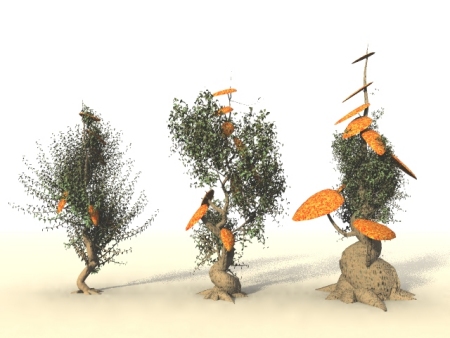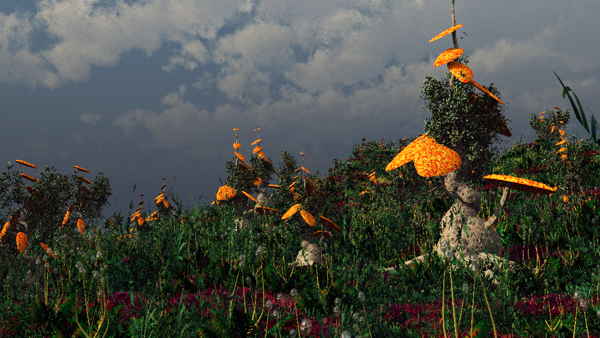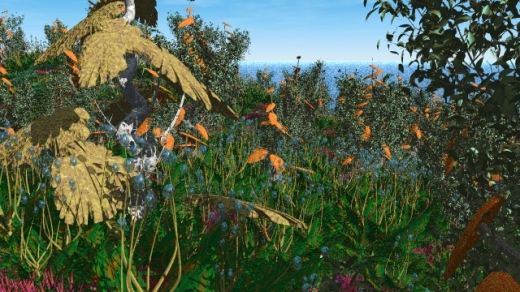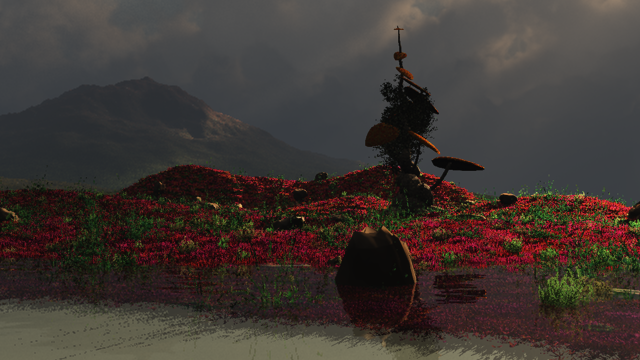


|
One of our first mixomorphs. The tordus shown here are a juvenile, an adult and an old specimen. In youth, they are largely dependent on photosynthesis, but as they get older they depend more and more on chemosynthesis. They will grow thicker with age, but will not become much higher after their juvenile growth spurt. The juvenile trees' leaves look a bit like those of Earth's olive trees. |
|
Tordu trees live in climates with fairly large seasonal differences, and are tolerant of quite large differences in temperature and light. Here, you see a spring scene; the halberds in the foreground are nearly ready to release their seed carrying balloons into the air currents of early summer. It is hard to think that in three months time this will all be dry, and all you hear will be the chigging of kermitoids. |

|

|
A dead specimen; note the drying out of the fungus organs. |
|
Imaging tips |

|